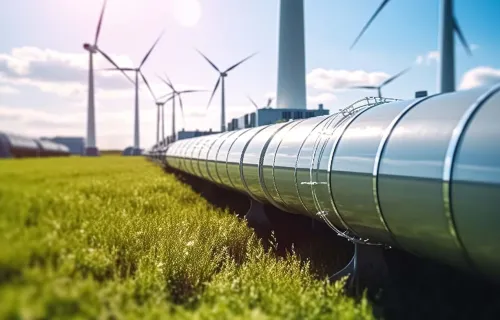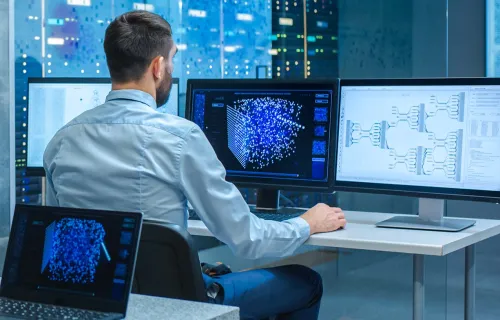CGI has been selected by HYmpulsion, a key player in hydrogen mobility in Auvergne-Rhône-Alpes, to support its logistics organization project to supply and distribute green hydrogen.
Six months of collaboration, benchmarks and customized studies led to the launch of a request for proposal to subcontract HYmpulsion’s transport and logistics activities. Take a look back on a groundbreaking project centered around a forward-looking energy that is essential for decarbonization, which still presents many challenges.
The client
HYmpulsion is a business structure founded in 2018. Its shareholders include major players such as Engie, Michelin, Crédit Agricole, Banque des Territoires and the French region of Auvergne-Rhône-Alpes. Hympulsion designs and operates renewable hydrogen recharging stations. This start-up is an integral part of the Zero Emission Valley project, led by the Auvergne-Rhône-Alpes region. To address this technology’s significant growth and its applications, HYmpulsion has chosen to identify and predict the challenges it is facing and expects to face very early on.
What is renewable hydrogen?
Most renewable hydrogen is currently produced from water electrolysis. The electrons used come from sustainable energy - wind, solar, hydroelectric, etc. - and are used to split hydrogen molecules (H2) from oxygen (O). Hydrogen is a storable energy capable of absorbing electrical power not consumed directly.
Later in the value chain and in a reverse process, hydrogen is combined with an oxygen atom and releases an electron that powers an electric motor in a truck, train or car, for example.
Renewable hydrogen is an energy carrier that is having a growing impact on light and heavy mobility. It is an essential energy for the energy mix of the future and the ecological transition. When it is used, no greenhouse gases, NOx (nitrogen oxide) or fine particles are emitted. The only byproduct is the combination of H2 and 0, H20: in other words, water.
The logistical challenges of hydrogen gas
However, hydrogen storage is an obstacle and it must comply with a number of technical and safety standards. Transporting it, particularly by road, also poses a challenge. While hydrogen is denser when it transitions from a gaseous state to a liquid state at -253°C, this process is also more energy-intensive.
Ever-changing regulations
In addition to the challenges involved in processing the material, it is strictly regulated by national and international institutions. Storage is particularly regulated between sites authorized, declared and classified as Regulated Environment Protection Facilities or Seveso Sites, high-risk industrial sites.
Support from CGI
CGI is at the forefront of Energy & Utilities companies’ major transformation programs and their energy-consuming clients. The firm helps its clients cope with major changes in the sector and better understand the energy challenges of tomorrow. CGI's business consulting teams work alongside their clients, whether to define a procurement strategy, review production infrastructure or network maintenance processes, implement new marketing solutions or integrate new energy efficiency services.
In this new context and under pressure, the CGI's business consulting teams came together to recommend the best approach to structure the HYmpulsion logistics process.
Developing models and devising what-if scenarios led to the launch of a transport and logistics request for proposal in order to implement a transport scheme that is both cohesive and even groundbreaking, given the unique nature of this energy.




